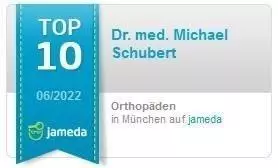Microscopic decompression
...without REINFORCEMENT
The desired expansion of the spinal canal and relief of the constricted nerves can often only be achieved with the surgical removal of protruding bone outgrowths. While this often meant a complex operation on the open spinal canal (laminectomy) in the past, in which the vertebral arches and vertebral joints were generously removed in the narrowed area, modern minimally invasive procedures using a surgical microscope, which enlarges the operating field many times over, now allow a targeted operation removal of the bone parts responsible for the narrowing with millimeter precision, without endangering the physiological and biomechanical conditions and thus the stability of the spine.
The minimally invasive procedure itself is particularly gentle on the tissue, since it can prevent injuries to nerves and the blood vessels running in the spinal canal. In addition, both the operation time and the convalescence phase are significantly shorter than in conventional stenosis operations. The results achieved here surpass traditional techniques such as laminectomy, in which most of the vertebral arches have to be removed.
In rare cases, in addition to the spinal canal stenosis, there is a so-called degenerative vertebral slippage. If it becomes apparent during the operation that there is relative instability, an additional ligament fixation (ligament) is carried out in addition to microscopic relief. Here, a pencil-thick ligament (thick thread) is passed like a figure eight around the spinous processes above and below and knotted together.
Even gentler thanks to new technology
A new type of microscopic decompression procedure is the so-called tube technique, in which the expansion of the spinal canal is even more tissue-friendly, with the help of a special tube (trocar). This is advanced under a microscope through a small skin incision from behind into the narrowed spinal canal area, so that the muscles do not have to be lifted from the bone over a large area. In order to make room for the nerves again, the narrowed segment is carefully cleared out using micro instruments that are advanced through the narrow tube into the surgical field.
The procedure is performed under general anesthesia and takes about 45 minutes.
A medical check-up takes place one day after the operation and then again three months later.
What aftercare is required?
In the first two weeks after the procedure, you will wear a specially adapted plastic corset that relieves your back and allows you to resume your usual activities soon. It is advisable to start physiotherapy tailored to your individual needs around two weeks after the operation under the supervision of a physiotherapist.
When can you do sports again?
You should be able to swim or cycle regularly again about six weeks after the procedure. You can resume your usual athletic training about nine weeks after the procedure.
When are you able to work again?
After about two weeks you can resume office work and light physical work. You should avoid heavy physical activity for the first three months and then slowly increase it.
What is the success rate?
In the international literature, success rates of around 85 percent are given.
At a glance!
| The most important facts and data are summarized and compared for you at a glance | ||
|---|---|---|
| Conventional stenosis surgery | MIOR©- M inimal- I nvasive- O peration and reconstruction of the spinal canal | |
| risk |
|
|
| Pains |
|
|
| After the procedure |
|
|
| hospital stay |
|
|
| surgery |
|
|
| Sports |
|
|
| meeting |
|
|
!!! The mobility and functionality of the spine is fully preserved !!!
The advantages at a glance:
- A short operation time.
- A smaller skin incision and a gentle procedure in which the muscles are largely spared. This procedure is therefore less stressful and the risk of complications is low.
- The stability of the spine is preserved.
- You can stand and walk pain-free just two hours after the operation.
- No longer hospital stay is necessary: you will be discharged from the hospital two to three days after the operation.
- A short convalescence: You can go back to your usual activities just three weeks after the operation.
- The procedure (tube technique) leaves hardly any scars.
- A high success rate.


